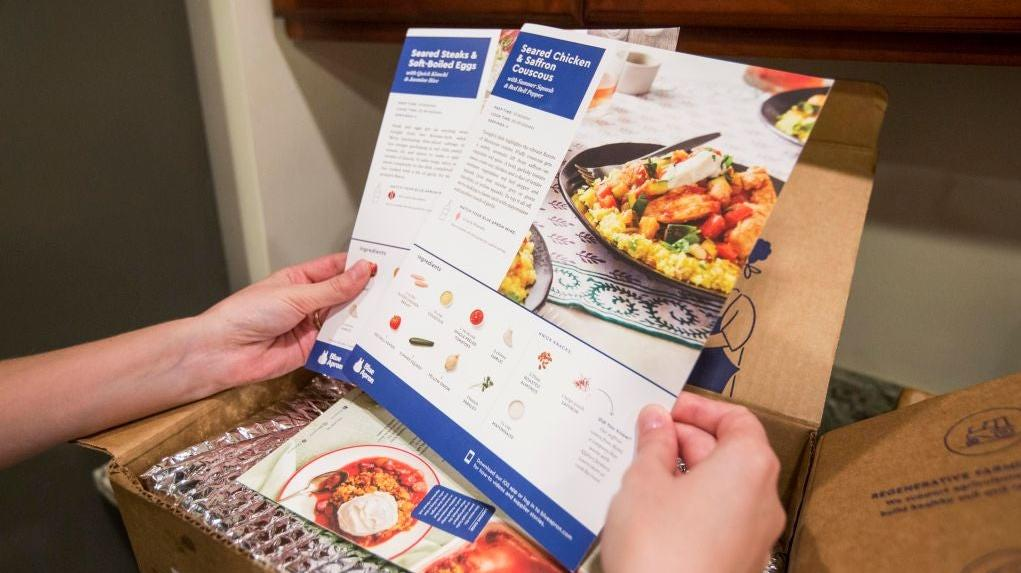Are Meal Kits In Peril Again?
The pandemic led to a boom in meal kit purchases. But will the good times continue?
Think back to the salad days of late 2019. You were probably living your life in blissful ignorance of the term "social distancing" and heading out to eat at least once a week—sound familiar? It was back in those days that meal kit subscription service Blue Apron was in relative peril, having experienced a 30% drop in sales and a 97% drop in stock values since its 2017 peak. Little did Blue Apron, or any of us, know that a global pandemic would be just the thing to kickstart a business renaissance: by late March 2020, the company's sales were skyrocketing by as much as 70% and other meal kit services were enjoying a similar (though not nearly as profound) quarantine-related boost. When we wrote about the situation last year, we asked:
What happens once this is all over? Will we all be hooked on our meal kits, never to return to a grocery store ever again? Or will we be so desperate to select our own produce that America will forever turn its back on the era of the meal kit?
Industry publication Grocery Dive sought to answer these very questions, though it charitably referred to meal kits' pandemic boom times as a "reprieve" from their struggle to win customers prior to COVID-19. Relying on data from Coresight Research, Grocery Dive put it this way: while 2020 was a good year for meal kits and Americans' general awareness of them continues to grow, "Companies are also focusing on product innovation and new offerings as they stare down the familiar challenges of low customer retention and high marketing costs."
That's a development that should be clear to anyone who receives meal kit marketing emails. Freshly has rolled out a "Proteins & Sides" menu of family-sized sharable portions; Blue Apron is tacking on appetizers and desserts; and some companies, such as Sunbasket, are pivoting to offer two types of boxes at once: meals that you prep and cook yourself with the ingredients provided, and ready-made meals that you simply heat and serve.
But will any of this make the difference that the meal kit industry so sorely needs it to? As pandemic restrictions are lifted, can these offerings possibly compete with the allure of returning to restaurants, or simply buying what we need at the grocery store and cooking meals at home without tons of cardboard and bubble wrap to break down? Grocery Dive cites less than encouraging data:
By 2024, Coresight forecasts annual growth to be just above 11% with total sales at $10.2 billion — roughly half of the almost $20 billion level Grand View Research forecasted last spring that the meal kit delivery service market could reach by 2027.
Time will tell, but the outlook is not as rosy as it might have been a few years ago. And knowing how meal kits got their big boost last year, we're not about to wish on any monkey's paw for Blue Apron's continued success.
